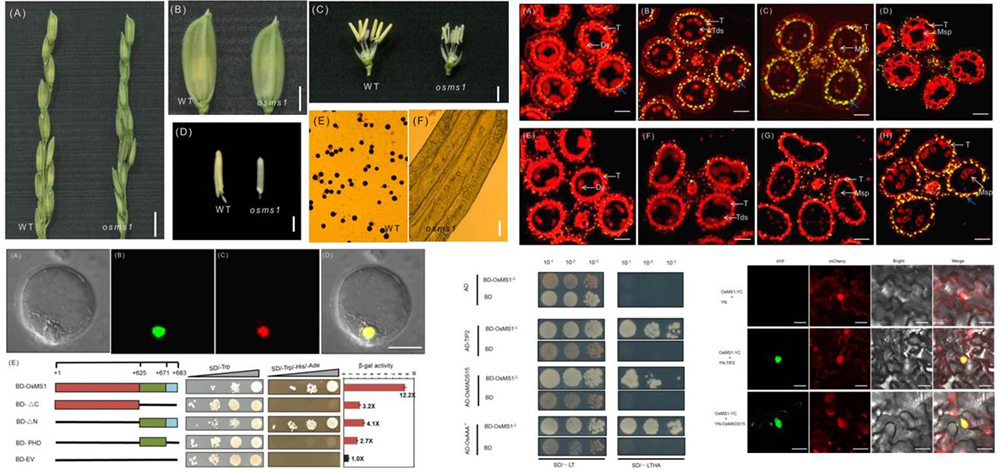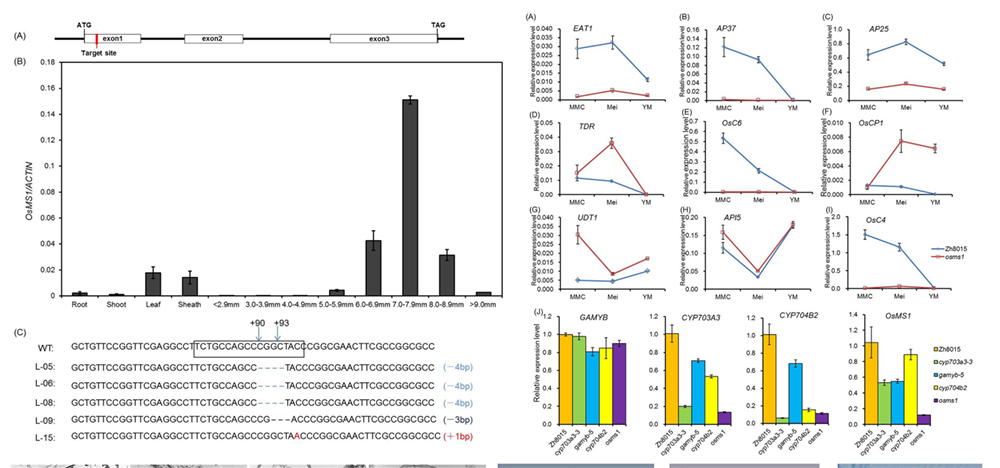









OsMS1 regulates programmed tapetum development and pollen exine formation in rice
January 25th, 2019
Recently, the Molecular Breeding team from China National Rice Research Institute (CNRRI) has revealed that OsMS1 functions as a transcriptional activator to regulate programmed tapetum development and pollen exine formation in rice (Oryza sativa L.). The results have been published in Plant Molecular Biology with PhD candidate Yang Zhengfu and Master’s degree candidate Liu Ling as co-first authors and Prof. Cheng Shihua and Prof. Cao Liyong as corresponding authors.
The tapetum is the innermost layer of the four-layer wall structure of anther and directly surrounds microspores, providing various enzymes and sporopollenin required for microspore wall development. Programmed cell death (PCD) of tapetum is indispensable for anther cuticle and pollen exine formation. Previous study has shown that PTC1 (OsMS1) plays a critical role in the regulation of tapetal PCD. However, how this occurs remains unclear.
Under indica rice cv. Zhonghui8015 (Zh8015) background, CNRRI’s researchers used CRISPR/Cas9 system to generate the homozygous mutant named as osms1, which displayed delayed tapetal degradation, abnormal pollen wall formation and complete male sterility. Further studies showed that OsMS1 functions as a transcriptional activator and interacts with known tapetal regulatory factors through its plant homeodomain (PHD) regulating tapetal PCD and pollen exine formation in rice.
This study was mainly supported by the National Key Transform Program (#2016ZX08001-002), and the Super Rice Breeding Innovation Team and Rice Heterosis Mechanism Research Innovation Team of the Chinese Academy of Agricultural Sciences Innovation Project (CAAS-ASTIP-2013-CNRRI). More details are available on the link below: https://rd.springer.com/article/10.1007/s11103-018-0811-0
· Study Reveals How the Clock Component OsLUX Regulates Rice Heading
· Scientists Further Unravelled the Underlying Mechanism of Heading Date Control in Rice
· Improving the efficiency of prime editing in rice
· A New Infection Mechanism of Ustilaginoidea virens is Revealed
· Scientists Further Reveal the Infection Mechanism of Ustilaginoidea virens
CNRRI Today
Copyright © 2014- China National Rice Research Institute